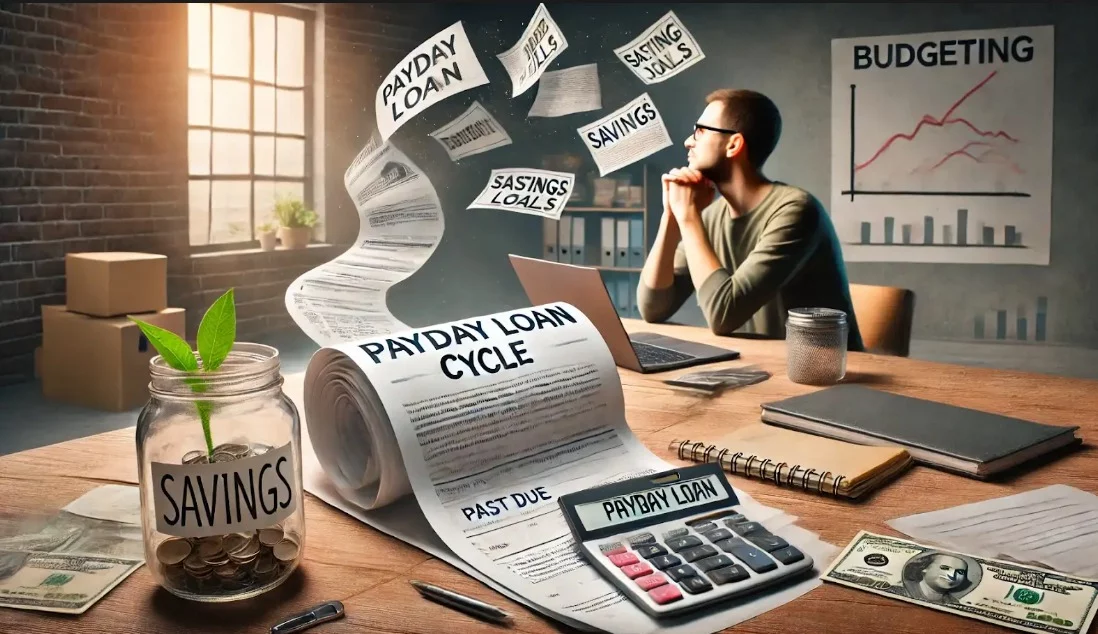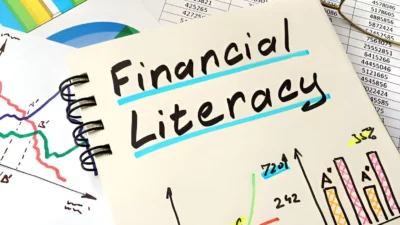Getting caught in a cycle of payday loans can feel overwhelming, like being stuck on a treadmill with no off switch. These short-term, high-interest loans often seem like a quick fix during a financial emergency, but their structure can rapidly lead to a debt trap that’s difficult to escape.
The good news is that breaking free is possible with a clear strategy and commitment. This guide provides a comprehensive roadmap to navigate your way out of payday loan debt and build a more secure financial foundation.
Understanding the Payday Loan Trap
Payday loans are typically small-dollar loans, often $500 or less, due on the borrower’s next payday. However, this convenience comes at a steep price.
The core problem lies in high interest rates and very short repayment terms. Many borrowers cannot repay the loan plus the substantial fees by the due date.
When this happens, the standard options are to “roll over” the loan by paying only the costs and extending the due date or to take out a new payday loan to cover the old one. Each rollover incurs additional fees, deepening the debt and perpetuating the cycle.
What started as a small loan can quickly balloon into an unmanageable sum, consuming a significant portion of each paycheck to cover fees, without reducing the principal amount owed.
Why Payday Loans Are Financially Dangerous
The APRs associated with these loans are astronomical compared to traditional forms of credit. While a credit card might have an APR of 15-30%, payday loan APRs frequently soar to 400% or higher.
This high cost drains financial resources that could be used for essential expenses or savings. Relying on payday loans can also negatively impact credit scores if the debt goes to collections.
Dealing with overwhelming debt often requires exploring various solutions, from consolidating debt with personal loans to seeking assistance from credit counseling agencies or exploring debt settlement options with companies like Freedom Debt Relief.
Step 1: Commit to No More Payday Loans
The first and most critical step is to commit to stopping taking out new payday loans. Breaking the cycle requires drawing a line in the sand. This means finding alternative ways to manage immediate financial pressures, even if it requires difficult choices or seeking help.
Step 2: Understand Your Total Debt Obligation
Gather all documentation related to the payday loans. Determine the amount owed on each loan, including principal and accumulated fees. Note the interest rates and the due dates. List all the lenders involved.
Creating a clear list or spreadsheet detailing each loan provides a comprehensive picture of the debt burden. This knowledge, while potentially intimidating, is empowering.
Step 3: Explore Repayment Strategies with the Lender
Before exploring external options, it is often beneficial to communicate directly with the payday lender(s).
While their business model relies on fees, some may be willing to work with borrowers who demonstrate a genuine inability to pay under the current terms.
Extended Payment Plans (EPPs)
Many states require payday lenders to offer Extended Payment Plans (EPPs) at no extra cost. An EPP typically allows borrowers to repay the loan over a longer period without incurring further fees or interest. Inquire directly with the lender about eligibility for an EPP.
Direct Negotiation
If an EPP isn’t available or suitable, attempt to negotiate a different repayment plan. Explain the financial hardship situation honestly. Some lenders might agree to a settlement for a lower amount or structure payments differently, although this is not guaranteed.
Step 4: Investigate Alternative Financing Options to Replace Payday Loans
Replacing high-interest payday loans with more affordable forms of credit can significantly ease the repayment process and break the cycle. Several alternatives exist, though eligibility varies based on creditworthiness and individual circumstances.
Payday Alternative Loans (PALs)
Offered by some federal credit unions, Payday Alternative Loans (PALs) are specifically designed to provide members with a more affordable alternative to predatory payday loans. There are generally two types: PALs I and PALs II.
- PALs I: Loan amounts typically range from $200 to $1,000. Repayment terms are one to six months. The credit union can charge an application fee up to $20. To qualify, one generally needs to be a credit union member for at least one month.
- PALs II: Loan amounts can go up to $2,000. Repayment terms are one to twelve months. Membership duration requirements may not apply.
PALs have maximum APRs set by the National Credit Union Administration (NCUA), currently capped at 28%, making them significantly cheaper than payday loans. Contact local credit unions to inquire about membership requirements and PAL availability.
Personal Loans for Debt Consolidation
A personal loan from a bank, credit union, or reputable online lender can consolidate multiple payday loans into a single loan with a lower interest rate and a more manageable monthly payment.
These loans typically have fixed interest rates and repayment terms ranging from one to seven years.
Credit Card Cash Advances (Use with Extreme Caution)
A credit card cash advance is generally not recommended due to high interest rates and fees that start accruing immediately. However, in particular circumstances, the cost might still be lower than repeatedly rolling over a payday loan.
Borrowing from Friends or Family
Asking loved ones for financial help can be uncomfortable, but it may be an option. If pursuing this route, treat it as a formal loan. Put the terms in writing, including the loan amount, interest rate (if any), and repayment schedule.
Step 5: Seek Professional Guidance and Support
Navigating debt, especially high-interest debt like payday loans, can be complex. Seeking help from qualified professionals can provide valuable guidance and structured solutions.
Non-Profit Credit Counseling Agencies
Reputable non-profit credit counseling agencies offer various services, often free or cheap. A certified credit counselor can review the financial situation, help create a realistic budget, discuss debt repayment strategies, and provide financial education.
Debt Management Plans (DMPs)
A Debt Management Plan (DMP) might be an option through a credit counseling agency. With a DMP, the borrower makes one consolidated monthly payment to the agency, which then distributes the funds to the creditors.
The agency often negotiates lower interest rates or fee waivers with creditors, including potentially payday lenders. DMPs typically take three to five years to complete.
Debt Settlement
Debt settlement involves negotiating with creditors to pay back a lump sum less than the full amount owed. This is often pursued through for-profit debt settlement companies, though it can sometimes be negotiated directly or with the help of a credit counselor or attorney.
While settling debt can reduce the amount paid, it typically significantly negatively impacts credit scores. Settled accounts are marked as “settled for less than the full amount,” which lenders view unfavorably.
Step 6: Implement Budgeting, Expense Reduction, and Income Augmentation
Long-term escape from the payday loan cycle requires addressing the underlying financial pressures that led to borrowing in the first place, which requires careful financial management.
Create and Stick to a Budget
A budget is a fundamental tool for financial control. Track all income and expenses meticulously to understand where money is going. Identify areas where spending can be reduced or eliminated.
Allocate funds specifically for debt repayment, essential expenses, and, eventually, savings.
Cut Unnecessary Expenses
Review spending habits critically. Look for non-essential expenditures, such as subscriptions, dining out, entertainment, or shopping habits, that can be cut back.
Even small reductions across multiple categories can free up significant cash flow that can be redirected towards debt repayment.
Explore Ways to Increase Income
Supplementing income, even temporarily, can accelerate debt repayment. Consider options like taking on a part-time job, freelancing, selling unused belongings, or participating in the gig economy.
Step 7: Build a Financial Safety Net – The Emergency Fund
One of the primary reasons people turn to payday loans is the lack of an emergency fund to cover unexpected expenses like medical bills or car repairs.
Once the immediate payday loan crisis is resolved, prioritizing the creation of an emergency fund is crucial to prevent future reliance on high-interest debt.
Start small, aiming to save even $10 or $20 per paycheck. Gradually build the fund until it covers at least three to six months of essential living expenses.
Step 8: Understand Your Rights as a Borrower
Borrowers have rights, and payday lending is subject to state and federal regulations, although these vary significantly. Familiarize yourself with the specific rules in your state regarding payday lending caps, rollovers, and collection practices.
One important right is stopping automatic withdrawals from a bank account. Payday loan agreements often include authorization for electronic withdrawals.
Borrowers have the right to revoke this authorization. To do so, notify both the lender and the bank in writing. Send a letter via certified mail to the lender stating the revocation of ACH authorization.
Provide a copy of this letter to the bank. The bank might also require its specific form.
Staying Free
Escaping the payday loan cycle is a significant achievement, but the journey doesn’t end there. The final, ongoing step is committing to long-term financial health. This involves consistently practicing good financial habits: budgeting, monitoring spending, avoiding unnecessary debt, building savings, and seeking financial education.
By implementing the strategies outlined in this guide and maintaining financial discipline, it is possible to permanently avoid payday loans and build a more secure and prosperous future.
The path may require effort and sacrifice, but the freedom from the crushing weight of payday loan debt is well worth it.

Lexy Summer is a talented writer with a deep passion for the art of language and storytelling. With a background in editing and content creation, Lexy has honed her skills in crafting clear, engaging, and grammatically flawless writing.



